- Home
- Arthur C. Clarke
2001: A Space Odyssey (Arthur C. Clarke Collection: The Odyssey)
2001: A Space Odyssey (Arthur C. Clarke Collection: The Odyssey) Read online
2001 A Space Odyssey
Arthur C. Clarke
Copyright
2001 A Space Odyssey
Copyright © 1968 by Arthur C. Clarke and Polaris Productions, Inc.
Cover art to the electronic edition copyright © 2012 by RosettaBooks, LLC.
All rights reserved. No part of this book may be used or reproduced in any form or by any electronic or mechanical means, including information storage and retrieval systems, without permission in writing from the publisher, except by a reviewer who may quote brief passages in a review.
Electronic edition published 2012 by RosettaBooks, LLC, New York.
ISBN Mobipocket edition: 9780795330711
To Stanley
IN MEMORIAM
Little more than two weeks after writing the words in the foreword that follows, I received the shocking and completely unexpected news that Stanley Kubrick had died at the age of seventy. He was planning a special promotion of the movie in the year 2001; I am very sad that I will be unable to share the occasion with him.
Though we met only a few times during the three decades after completing 2001, we remained in friendly touch—as is demonstrated by the generous message which he sent to the BBC when I appeared on This Is Your Life:
August 22, 1994
Dear Arthur,
I’m sorry that work on my film prevents me from joining in this great honour to you tonight.
You are deservedly the best known science fiction writer in the world. You have done more than anyone to give us a vision of mankind reaching out from cradle earth to our future in the stars, where alien intelligences may treat us like a godlike father, or possibly like the “Godfather.”
In either case, I am confident that when this program, which will travel forever out into the Universe, eventually comes to their attention, they too will wish to honour you as one of the most far-seeing and important heralds of their existence.
But whether future generations will ever have the opportunity to know of this depends on the answer to your favorite question: Is there intelligent life on Earth?
Yours,
A few nights ago I dreamed that we were talking together (he was looking exactly the same as in 1964!) and he asked: “Well, what shall we do next?” There might have been a next, involving Brian Aldiss’s beautiful short story “Supertoys Last All Summer Long” which Stanley worked on for some time under the title “AI.” But for numerous reasons that fell through.
One of my deepest regrets now is that we shall not be able to welcome the year 2001 together.
—Arthur C. Clarke
16 April 1999
Contents
Foreword
Part One: Primeval Night
1 The Road to Extinction
2 The New Rock
3 Academy
4 The Leopard
5 Encounter in the dawn
6 Ascent of Man
Part Two: TMA-1
7 Special Flight
8 Orbital Rendezvous
9 Moon Shuttle
10 Clavius Base
11 Anomaly
12 Journey by Earthlight
13 The Slow Dawn
14 The Listeners
Part Three: Between Planets
15 Discovery
16 Hal
17 Cruise Mode
18 Through the Asteroids
19 Transit of Jupiter
20 The World of the Gods
Part Four: Abyss
21 Birthday Party
22 Excursion
23 Diagnosis
24 Broken Circuit
25 First Man to Saturn
26 Dialogue with Hal
27 “Need to Know”
28 In Vacuum
29 Alone
30 The Secret
Part Five: The Moons of Saturn
31 Survival
32 Concerning E.T.’s
33 Ambassador
34 The Orbiting Ice
35 The Eye of Japetus
36 Big Brother
37 Experiment
38 The Sentinel
39 Into the Eye
40 Exit
Part Six: Through the Star Gate
41 Grand Central
42 The Alien Sky
43 Inferno
44 Reception
45 Recapitulation
46 Transformation
47 Star-Child
Foreword to the Millennial Edition
It is now thirty-five years since Stanley Kubrick began his quest for the proverbial “good science fiction movie,” and already 1964 seems to belong to another age. Only a handful of men—and one woman—had gone into space, and although President Kennedy had announced the United States’ intention of putting a man on the Moon before the end of the decade, I doubt if many people believed it would actually happen.
Moreover, our genuine knowledge of our neighbors in space was still virtually zero: we could not even be sure that the first probe to touch down on the Moon would not instantly sink into a sea of dust, as some astronomers had confidently predicted.
To give some sense of perspective, let me quote from the (mostly) nonfictional account of our enterprise, The Lost Worlds of 2001, which I wrote in 1971 when everything was still fresh in my mind:
“In the spring of ’64… the lunar landing still seemed psychologically a dream of the far future. Intellectually, we knew it was inevitable; emotionally, we could not really believe it…. The first two-man Gemini flight (Grissom and Young) would not take place for another year, and argument was still raging about the nature of the lunar surface…. Though NASA was spending the entire budget of our movie (over $10,000,000) every day, space exploration seemed to be marking time. But the portents were clear; I often remarked to Stanley that the film would be still on its first run when men were actually walking on the Moon.
So in writing our story line, at the early dawn of the space age, Stanley and I had a credibility problem; we wanted to create something realistic and plausible, that would not be made obsolete by the events of the next few years. And although our original working title was How the Solar System Was Won, Stanley was aiming at something more than a straightforward tale of exploration. As he was fond of telling me, “What I want is a theme of mythic grandeur.”
Well, as the real year 2001 approaches, the movie has become part of popular culture: I doubt if even in his wildest dreams Stanley imagined that one day a hundred million Americans would know exactly who (what?) was speaking when a Super Bowl commercial announced in a silken yet sinister voice “It was a bug, Dave.” And if anyone still believes the legend that HAL was derived from IBM by displacing one letter, let me once again point wearily to Chapter 16 for the correct origin of the name.
If you want the definitive version, I refer you to the superb Voyager-Criterion video disc, which contains not only the full movie but also a vast amount of archival material relating its production. These are glimpses of the film being shot, and discussions with the artists, scientists, and technicians who made it possible. It also shows a youthful Arthur C. Clarke being interviewed in the lunar-module assembly room at Grumman Aircraft, surrounded by the hardware which a few years later was resting on the surface of the Moon. The sequence ends with a fascinating comparison between the movie and the later realities of Apollo, Skylab, and Shuttle flights—some of which do not look anything like as convincing as Stanley’s previsions.
It is therefore hardly surprising that, even in my own mind, book and movie tend to be confused with each other—and with reality; the various sequels make the situation
even more complicated. So I’d like to go back to the beginning and recall how the whole thing started.
In April 1964 I left Ceylon, as it was then called, and went to New York to complete my editorial work on the Time/Life book Man and Space. I cannot resist quoting from my reminiscences of this time:
It was strange, being back in New York after several years of living in the tropical paradise of Ceylon. Commuting—even if only for three stations on the IRT—was an exotic novelty, after my humdrum existence among elephants, coral reefs, monsoons and sunken treasure ships. The strange cries, cheerful smiling faces, and unfailingly courteous manners of the Manhattanites as they went about their mysterious affairs were a continual source of fascination; so were the comfortable trains whispering quietly through the spotless subway stations, the advertisements (often charmingly adorned by amateur artists) for such outlandish products as Levy’s bread, the New York Post, Piel’s beer, and a dozen competing brands of oral carcinogens. But you can get used to anything in time, and after a while (about fifteen minutes) the glamour faded. (From Report on Planet Three: “Son of Dr. Strangelove”)
My work on Man and Space progressed very smoothly because whenever one of Time/Life’s zealous researchers asked me, “What is your authority for this statement?” I would fix her with a basilisk stare and answer, “You’re looking at him.” So I had ample energy for moonlighting with Stanley, and our first encounter was in Trader Vic’s on April 23. (They should put up a plaque to mark the spot.) Stanley was still basking in the success of his last movie, Dr. Strangelove, and was looking for an even more ambitious theme. He wanted to make a movie about man’s place in the universe—a project likely to give a heart attack to any studio head of the old school—or, for that matter, of the new one.
Stanley—who becomes an instant expert in any subject that concerns him—had already devoured several libraries of science fact and science fiction. He had also acquired rights to a property with the intriguing title Shadow on the Sun; I remember nothing whatsoever about it and have even forgotten the author’s name, so presumably he was not one of the s.f. regulars. Whoever he was, I hope he never knows that I sabotaged his career, because Kubrick was promptly informed that Clarke was not interested in developing other people’s ideas. (See the Afterword of Rama Il for the curious series of events which caused a change of policy with Cradle a couple of decades later.) This point having been settled, we decided to create Something Entirely New.
Now, before you make a movie, you have to have a script, and before you have a script, you have to have a story; though some avant-garde directors have tried to dispense with the latter item, you’ll find their work only at art theaters. I had already given Stanley a list of my shorter pieces, and we had decided that one—“The Sentinel”—contained a basic idea on which we could build.
“The Sentinel” was written in an explosion of energy at Christmas 1948, as my entry for a BBC short story competition; it wasn’t even placed, and I’ve sometimes wondered what did win (probably an epic of angst in Tunbridge Wells). It has now been anthologized so often* that I need only say that it’s a mood piece about the discovery of an alien artifact on the Moon—a kind of burglar alarm, waiting to be set off by mankind’s arrival.
2001 is often said to be based on “The Sentinel,” but that is a gross oversimplification; the two bear much the same relationship as an acorn and an oak tree. It needed a lot more material to make the movie, and some of it came from “Encounter in the Dawn” (a.k.a. “Expedition to Earth” and published in the collection of that name) and four other short stories. But most of it was wholly new, and the result of months of brainstorming with Stanley—followed by lonely (well, fairly lonely) hours in Room 1008 of the famous Hotel Chelsea, at 222 West 23rd Street.
This is where most of the novel was written, and the journal of this often painful process is found in The Lost Worlds of 2001. But why write a novel, you may well ask, when we were aiming to make a movie? It’s true that novelizations (ugh) are all too often produced afterward; in this case, Stanley had excellent reasons for reversing this process.
Because a screenplay has to specify everything in excruciating detail, it is almost as tedious to read as to write. John Fowles put it very well when he said: “Writing a novel is like swimming through the sea; writing a film script is like thrashing through treacle.” Perhaps because Stanley realized that I had low tolerance for boredom, he suggested that before we embarked on the drudgery of the script, we let our imaginations soar freely by writing a complete novel, from which we would later derive the script. (And, hopefully, a little cash.)
This is more or less the way it worked out, though toward the end novel and screenplay were being written simultaneously, with feedback in both directions. Thus I rewrote some sections after seeing the movie rushes—a rather expensive method of literary creation, which few other authors can have enjoyed, though I am not sure if “enjoyed” is the right word.
To give the flavor of that hectic time, here are some extracts from the journal I must have hastily written in the smaller hours of the morning:
May 28, 1964. Suggested to Stanley that “they” might be machines who regard organic life as a hideous disease. Stanley thinks this is cute…
June 2. Averaging one or two thousand words a day. Stanley says, “We’ve got a best seller here.”
July 11. Joined Stanley to discuss plot development, but spent almost all the time arguing about Cantor’s Transfinite Groups…. I decide that he is a latent mathematical genius.
July 12. Now have everything—except the plot.
July 26. Stanley’s (36th) birthday. Went to the Village and found a card with the inscription: “How can you have a Happy Birthday when the whole world may blow up at any minute?”*
Sept. 28. Dreamed I was a robot being rebuilt. Took two chapters to Stanley, who cooked me a fine steak, remarking, “Joe Levine doesn’t do this for his writers.”
October 17. Stanley has invented the wild idea of slightly fag robots who create a Victorian environment to put our heroes at their ease.
November 28. Phoned Isaac Asimov to discuss the biochemistry of turning vegetarians into carnivores.
December 10. Stanley calls after screening H. G. Wells’s Things to Come and says he’ll never see another movie I recommend.
December 24. Slowly tinkering with the final pages, so I can have them as a Christmas present for Stanley.
This entry records my hope that the novel was now essentially complete; in fact, all we had was merely a rough draft of the first two thirds, stopping at the most exciting point—because we hadn’t the faintest idea what would happen next. But it was enough to let Stanley set up the deal with MGM and Cinerama for what was originally trumpeted as Journey Beyond the Stars. (Another variant: How the Solar System Was Won. Not a bad title—and the time may now be ripe for it. But don’t call me, and I won’t call you.)
Throughout 1965 Stanley was involved in the incredibly complex post-production activities—made even more difficult by the fact that the film would be shot in England while he was still in New York, and under no circumstances would he travel by air. I am in no position to criticize: Stanley learned not to fly the hard way—while getting his pilot’s license. For similar reasons, I have never been behind a steering wheel since the day I (barely) passed my driving test in Sydney, Australia, in 1956. I too was cured for life by the traumatic experience.
While Stanley was making the movie, I was trying to complete the final, final version of the novel, which of course had to receive his blessing before it could be published. This proved extremely difficult to obtain, partly because he was so busy at the studio that he never had time to focus his attention on the many versions of the manuscript. He swore he wasn’t dragging his feet, to make certain that the movie appeared before the book. Which it did—by several months—in the spring of 1968.
Considering its complex and agonizing gestation, it is not surprising that the novel differs from the movi
e in several respects. Most important—and how lucky this was we could never have guessed at the time—Stanley decided to rendezvous with Jupiter, whereas in the novel the spaceship Discovery flew on to Saturn, using Jupiter’s gravitational field to boost it on its way.
Precisely this “perturbation maneuver” was used by the Voyager spacecraft eleven years later.
Why the change from Saturn to Jupiter? Well, it made a more straightforward story line—and, more important, the special-effects department couldn’t produce a Saturn that Stanley found convincing. If it had done so, the movie would by now have been badly dated, since the Voyager missions showed Saturn’s rings to be far more implausible than anyone had ever dreamed.
For more than a decade after publication of the novel (July 1968) I indignantly denied that any sequel was possible or that I had the slightest intention of writing one. But the brilliant success of the Voyager missions changed my mind; distant worlds about which absolutely nothing was known when Stanley and I started our collaboration suddenly became real places, with fantastic surface conditions. Who would ever have imagined satellites entirely covered with ice floes, or volcanos spurting sulfur a hundred kilometers into space? Science fiction could now be made far more convincing by science fact. 2010: Odyssey Two was about the real Jovian satellite system.
There is also another profound distinction between the two books. 2001 was written in an age which now lies beyond one of the great divides in human history; we are sundered from it forever by the moment when Neil Armstrong and Buzz Aldrin stepped out onto the Sea of Tranquility. Now history and fiction have become inextricably intertwined; the Apollo astronauts had already seen the film when they left for the moon. The crew of Apollo 8, who at Christmas, 1968, became the first men ever to set eyes upon the lunar far side, told me that they had been tempted to radio back the discovery of a large black monolith. Alas, discretion prevailed.
The Apollo 13 mission, however, does have an uncanny connection with 2001. When the computer HAL reported the “failure” of the AE 35 Unit, the phrase he used was “Sorry to interrupt the festivities, but we have a problem.”

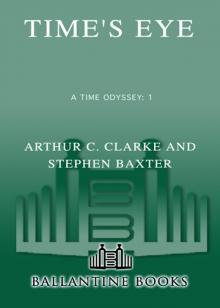 Time's Eye
Time's Eye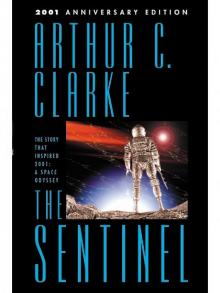 The Sentinel
The Sentinel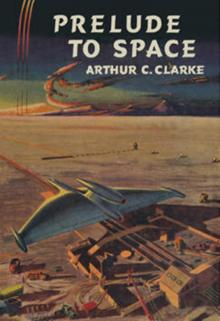 Prelude to Space
Prelude to Space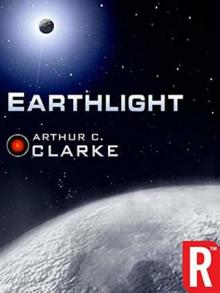 Earthlight (Arthur C. Clarke Collection)
Earthlight (Arthur C. Clarke Collection) 2001: A Space Odyssey
2001: A Space Odyssey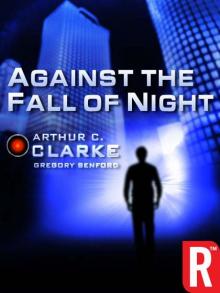 Against the Fall of Night
Against the Fall of Night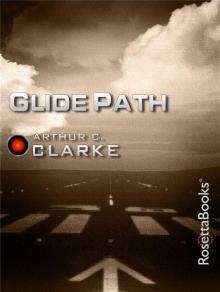 Glide Path
Glide Path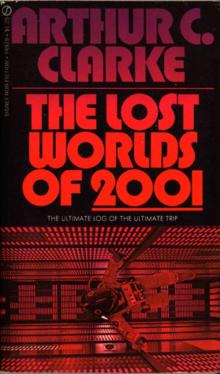 The Lost Worlds of 2001
The Lost Worlds of 2001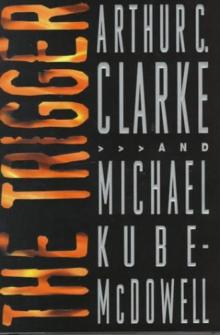 The Trigger
The Trigger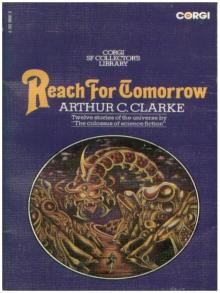 Reach for Tomorrow
Reach for Tomorrow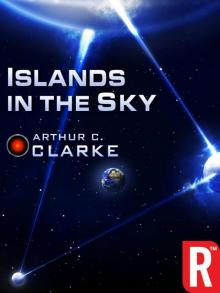 Islands in the Sky
Islands in the Sky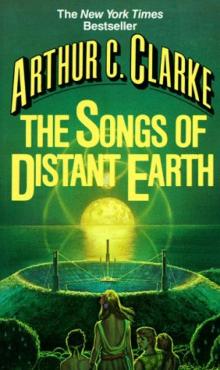 The Songs of Distant Earth
The Songs of Distant Earth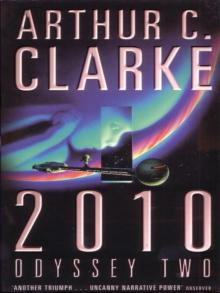 2010: Odyssey Two
2010: Odyssey Two Childhood's End
Childhood's End 3001: The Final Odyssey
3001: The Final Odyssey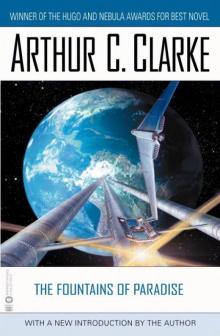 The Fountains of Paradise
The Fountains of Paradise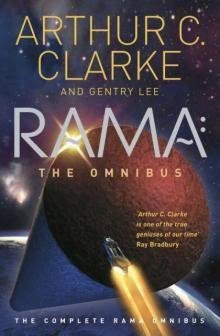 Rama: The Omnibus
Rama: The Omnibus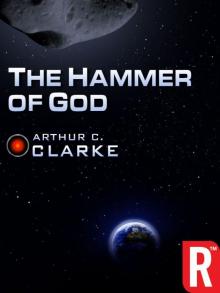 The Hammer of God
The Hammer of God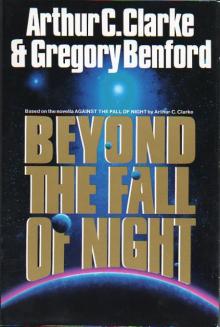 Beyond the Fall of Night
Beyond the Fall of Night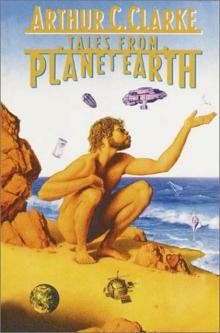 Tales From Planet Earth
Tales From Planet Earth 2061: Odyssey Three
2061: Odyssey Three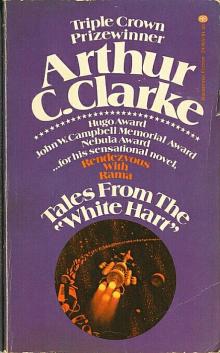 Tales From the White Hart
Tales From the White Hart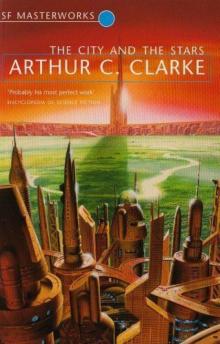 The City and the Stars/The Sands of Mars
The City and the Stars/The Sands of Mars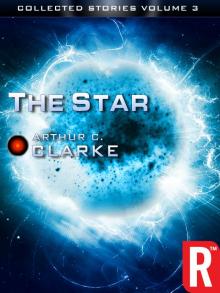 The Star
The Star Imperial Earth
Imperial Earth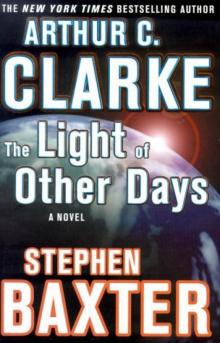 The Light of Other Days
The Light of Other Days Firstborn
Firstborn The Other Side of the Sky
The Other Side of the Sky Cradle
Cradle The Wind From the Sun
The Wind From the Sun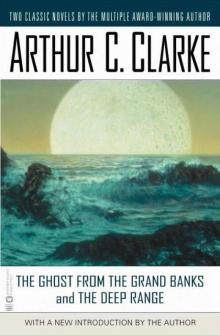 The Ghost From the Grand Banks and the Deep Range
The Ghost From the Grand Banks and the Deep Range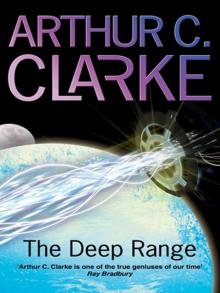 The Deep Range
The Deep Range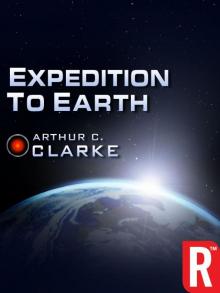 Expedition to Earth
Expedition to Earth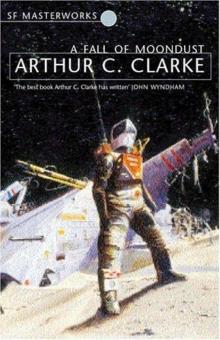 A Fall of Moondust
A Fall of Moondust Dolphin Island (Arthur C. Clarke Collection)
Dolphin Island (Arthur C. Clarke Collection)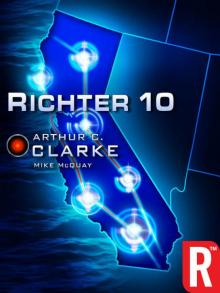 Richter 10
Richter 10 The City and the Stars
The City and the Stars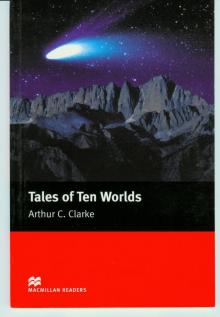 Tales of Ten Worlds
Tales of Ten Worlds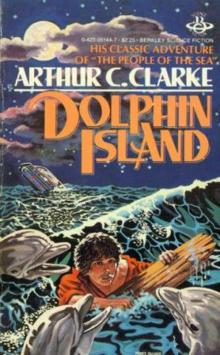 Dolphin Island
Dolphin Island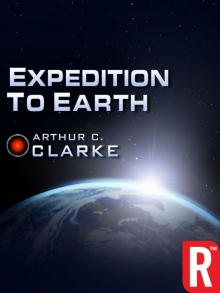 Expedition to Earth (Arthur C. Clarke Collection: Short Stories)
Expedition to Earth (Arthur C. Clarke Collection: Short Stories) Sunstorm
Sunstorm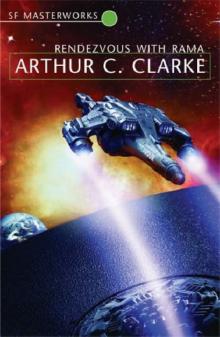 Rendezvous with Rama
Rendezvous with Rama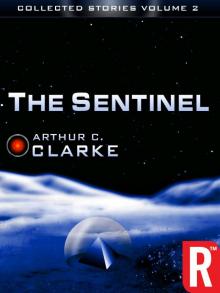 The Collected Stories of Arthur C. Clarke
The Collected Stories of Arthur C. Clarke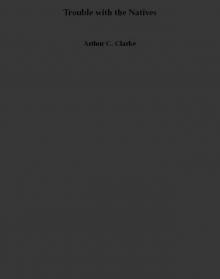 Trouble with the Natives
Trouble with the Natives Rama Revealed r-4
Rama Revealed r-4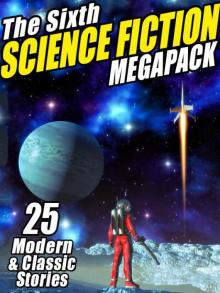 The Sixth Science Fiction Megapack
The Sixth Science Fiction Megapack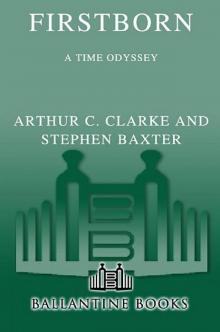 Firstborn to-3
Firstborn to-3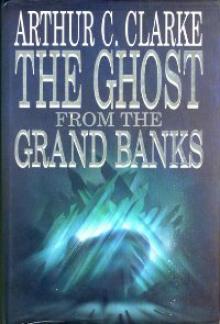 The Ghost from the Grand Banks
The Ghost from the Grand Banks Into the Comet
Into the Comet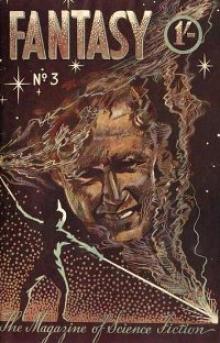 The Fires Within
The Fires Within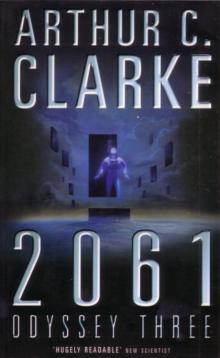 2061: Odyssey 3
2061: Odyssey 3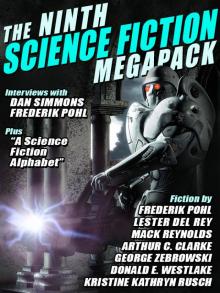 The Ninth Science Fiction Megapack
The Ninth Science Fiction Megapack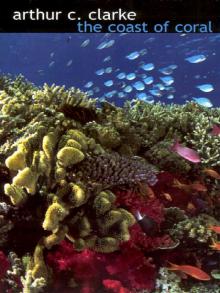 The Coast of Coral
The Coast of Coral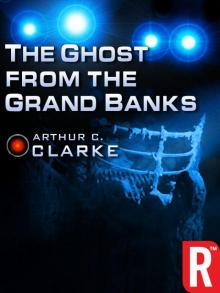 The Ghost from the Grand Banks (Arthur C. Clarke Collection)
The Ghost from the Grand Banks (Arthur C. Clarke Collection)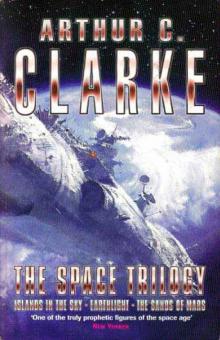 The Space Trilogy
The Space Trilogy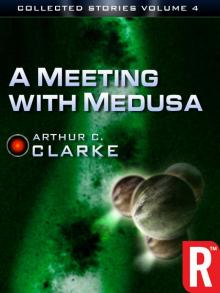 A Meeting With Medusa
A Meeting With Medusa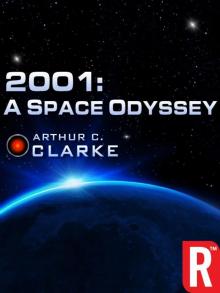 2001: A Space Odyssey (Arthur C. Clarke Collection: The Odyssey)
2001: A Space Odyssey (Arthur C. Clarke Collection: The Odyssey)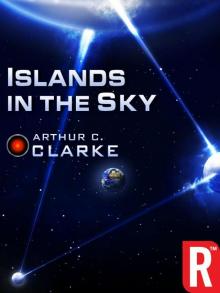 Islands in the Sky (Arthur C. Clarke Collection)
Islands in the Sky (Arthur C. Clarke Collection)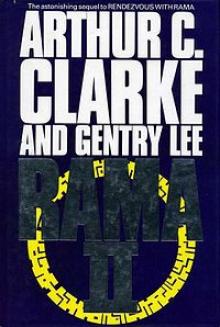 Rama II r-2
Rama II r-2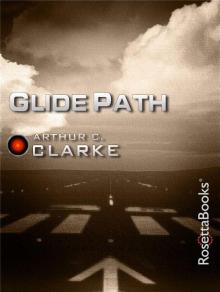 Glide Path (Arthur C. Clarke Collection)
Glide Path (Arthur C. Clarke Collection)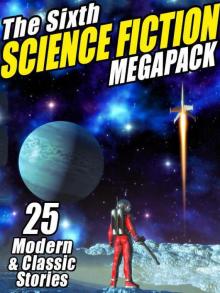 The Sixth Science Fiction Megapack: 25 Classic and Modern Science Fiction Stories
The Sixth Science Fiction Megapack: 25 Classic and Modern Science Fiction Stories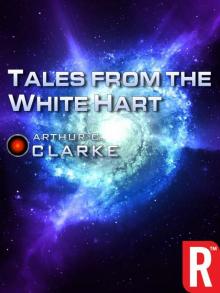 Tales from the White Hart (Arthur C. Clarke Collection: Short Stories)
Tales from the White Hart (Arthur C. Clarke Collection: Short Stories) The Reluctant Orchid
The Reluctant Orchid